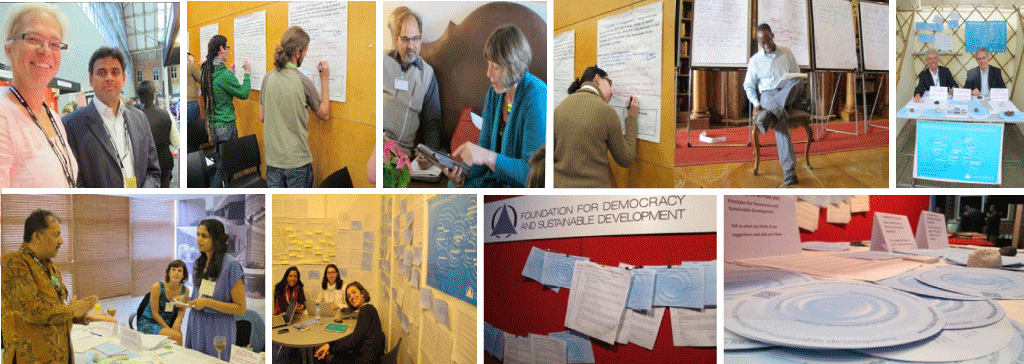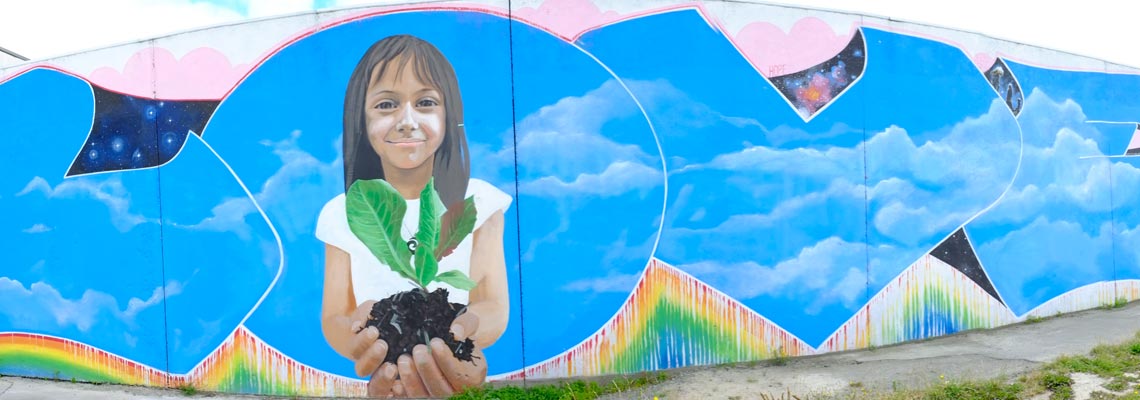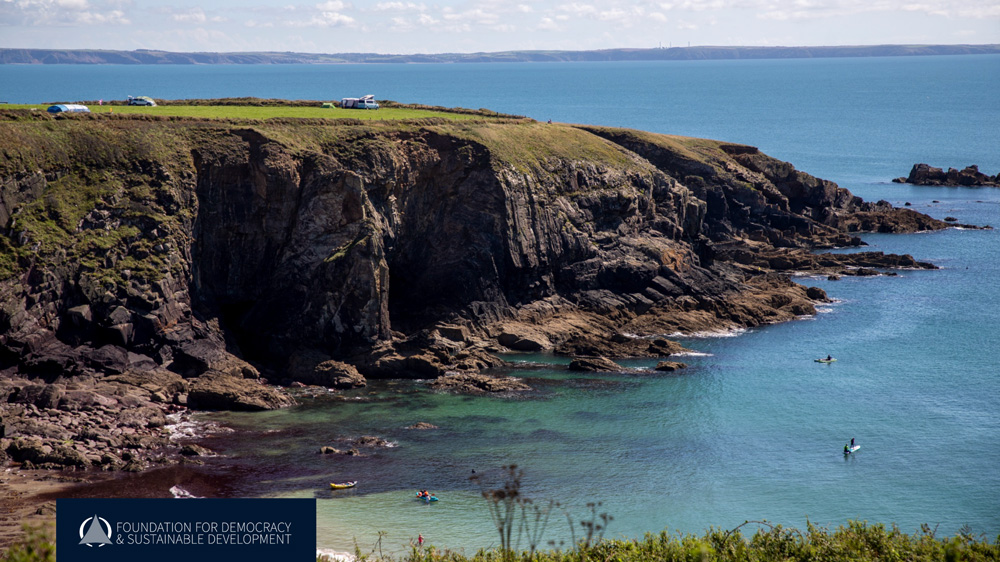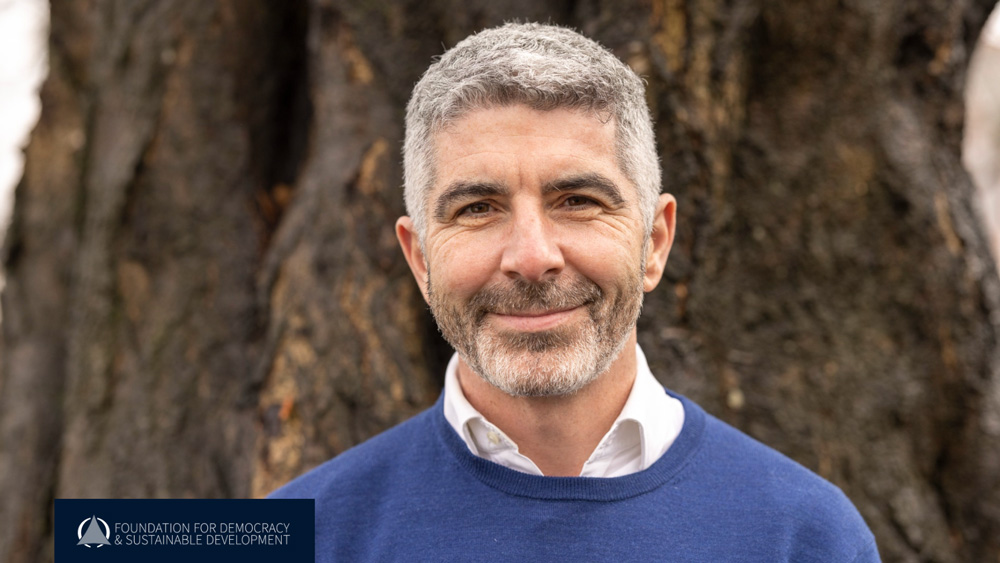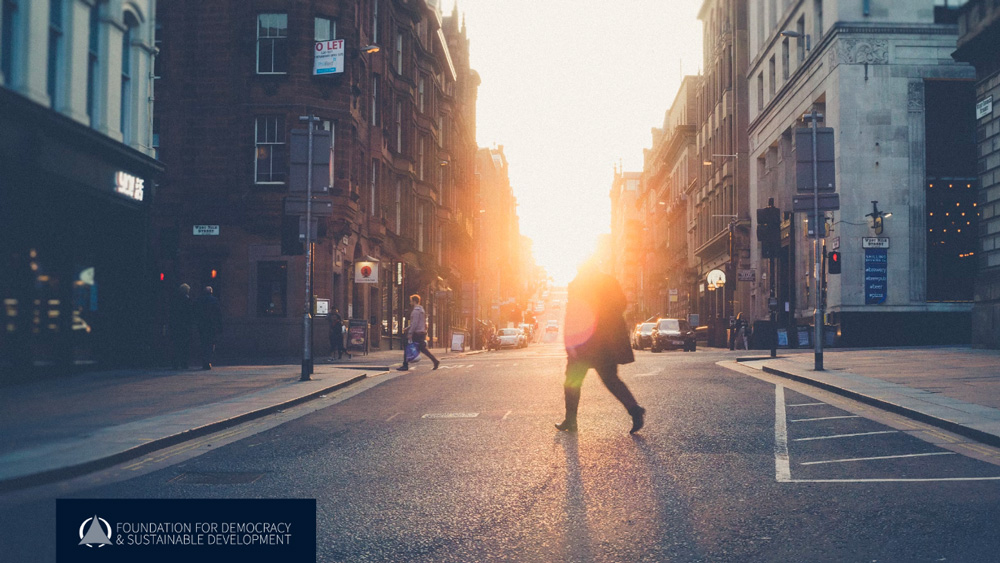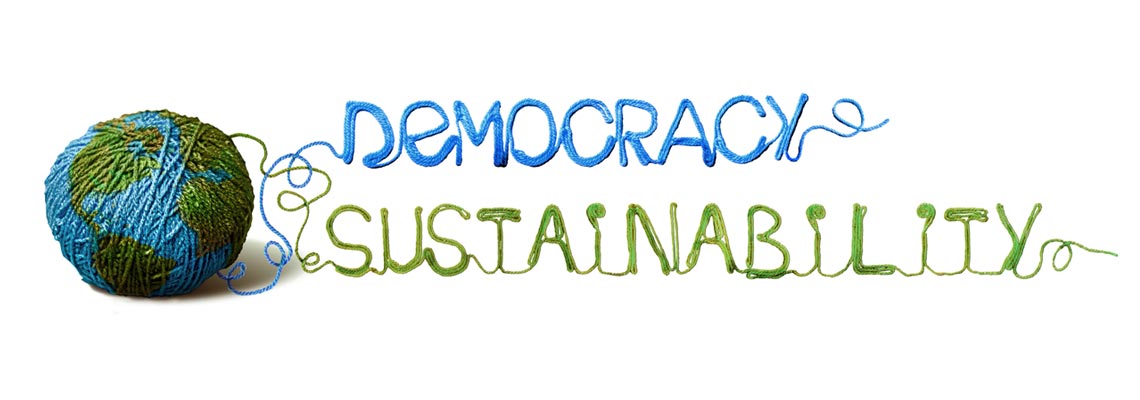
FDSD’s first programme of work, 2009 to 2013, culminated in a Manifesto for Democracy and Sustainability, the guiding principles being:
We cherish sustainability: meeting the needs of people now without compromising the ability of future generations to meet their own needs. But today, human activities have exceeded the earth’s natural limits. As a species we have created great inequalities and torn resources away from those yet to be born.
We cherish democracy: the rule of the people, by the people, and for the people. But democracy is undermined by decision-making that is democratic in name only. It is threatened by conflict, apathy, inequality, manipulation and corruption. It is failing to deliver sustainability.
Together, if we take immediate action, we have the power to transform democracy so that it is an engine for sustainability.
Our intention was to start a movement and, to gather ideas and inspiration for the Manifesto, we began with a consultation which lasted six months, from June to December 2012, involving 340 people across 37 countries. The consultation was launched in Rio de Janeiro in June 2012.
The consultation process
Participants in the consultation process were invited to submit reactions to a series of seven draft Principles proposed by FDSD. They were also invited to offer suggestions on actions, practical innovations, or existing examples that could, if taken up more widely, help to get democracy to work better for sustainable development. The overall framework for the consultation invited participants to help start a ripple effect by submitting ideas that could shape a manifesto for change. By the conclusion of the consultation in December 2012, around 340 people in 37 countries had submitted ideas through workshops, exhibition stands and online consultation forms.
Nearly 50% of the consultation responses came from people in the FDSD’s home country, the UK. But the idea had always been for a Manifesto that could inspire action everywhere. There were also consultation events, hosted by a variety of organisations, in Rio de Janeiro (The Access Initiative, International Institute for Environment and Development), the Philippines (Ateneo School of Government), Spain (IIDMA/CONAMA), Argentina (Fundación Cambio Democrático and FLACSO), and Pakistan (Lok Sanjh Foundation).
The public consultation period for the Manifesto ended in November 2012. FDSD collated and analysed the complete set of consultation responses, and used these to draft a Mark I of a complete Manifesto text.
The penultimate stop in the drafting process was an international synthesis seminar co-organised by FDSD and Salzburg Global Seminar (SGS) and hosted by SGS at Schloss Leopoldskron in Austria, where a diverse invited group of twenty participants from sixteen countries gathered over three days in December 2012. Their tasks during the facilitated discussion were to reflect on the collated consultation responses, to offer feedback on the Mark I Manifesto text, and to share ideas on how best to launch the Manifesto. Participants at the seminar were not asked to arrive at consensus on a draft final text but to advise its drafters at FDSD. Everyone participated in his or her personal capacity.
FDSD’s Halina Ward drafted a final three-page version of the first edition of the Manifesto for Democracy and Sustainability in early January 2013. The process of gathering founder signatories and building the Democracy and Sustainability Platform website and associated materials then began.
The Democracy and Sustainability platform
The website for the Democracy and Sustainability Platform launched on 20th March 2013. There were blog posts and announcements across the world, and 166 individual founder signatories, with 36 organisations signing up as well. The participatory process behind the Manifesto had focused many minds and informed debate, and the Manifesto will remain a key statement of principles underlying the connection between democracy and sustainability.
But the Manifesto platform did not survive as the basis of a movement, although there were a variety of related activities. During the participatory process it had become clear there were those who wanted an alliance while others were solely focused on their own particular piece of the agenda. This is true of any movement but continuing momentum then requires far more stewardship and resources than FDSD could bring to bear.
Reflections
We noticed that there were people who liked the Manifesto following its launch, but did not feel able to sign up to it. Sometimes there was one point of disagreement – the commitment to the creation of a Parliamentary Assembly of the United Nations was controversial, for instance – and those concerned were not persuaded that it was possible to sign without agreeing to everything.
Or there was the view that the Manifesto, once finalized, didn’t inspire participation despite the intention that it should be a living document. One supporter, who was nonetheless reluctant to sign up, commented that he didn’t have a sense of ownership or permission with regard to the Manifesto unlike our founding signatories. And, although happy to endorse the values of the Manifesto, it was not driven by immediate specific threats which could inspire action. Movements and campaigning may have longer term goals, but the energy and commitment of course depends on what is going on in the here and now.
So this takes FDSD back to its core question – how to bring a view to our common future more powerfully into our democratic present. The Ideas in Action, gathered here on FDSD’s site, give leads as to how this can be done. And as an example of an Idea in Action, the strength of the Manifesto lay in the participatory process which created it.
Archive
 The Sustainability and Democracy platform has been archived. The full website content is available for download in zip-format (8.9MB). After unpacking the zip-file simply open the index.html document in your web browser – you are running the website from your own PC.
The Sustainability and Democracy platform has been archived. The full website content is available for download in zip-format (8.9MB). After unpacking the zip-file simply open the index.html document in your web browser – you are running the website from your own PC.
Downloads
- The Manifesto for Sustainability and Democracy in English | Español | Deutsch | Cymraeg | 中文, Chinese | Italiano | Português| Français
- List of signatories and signing organisations
- Sustainability and Democracy Platform (8.9MB)

